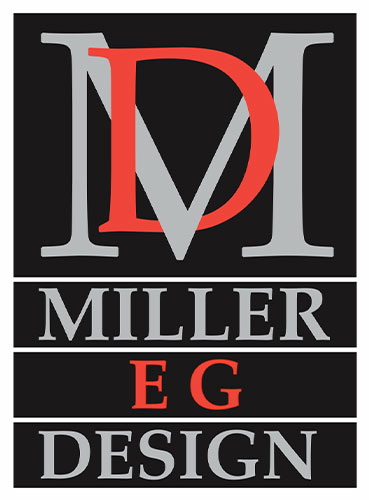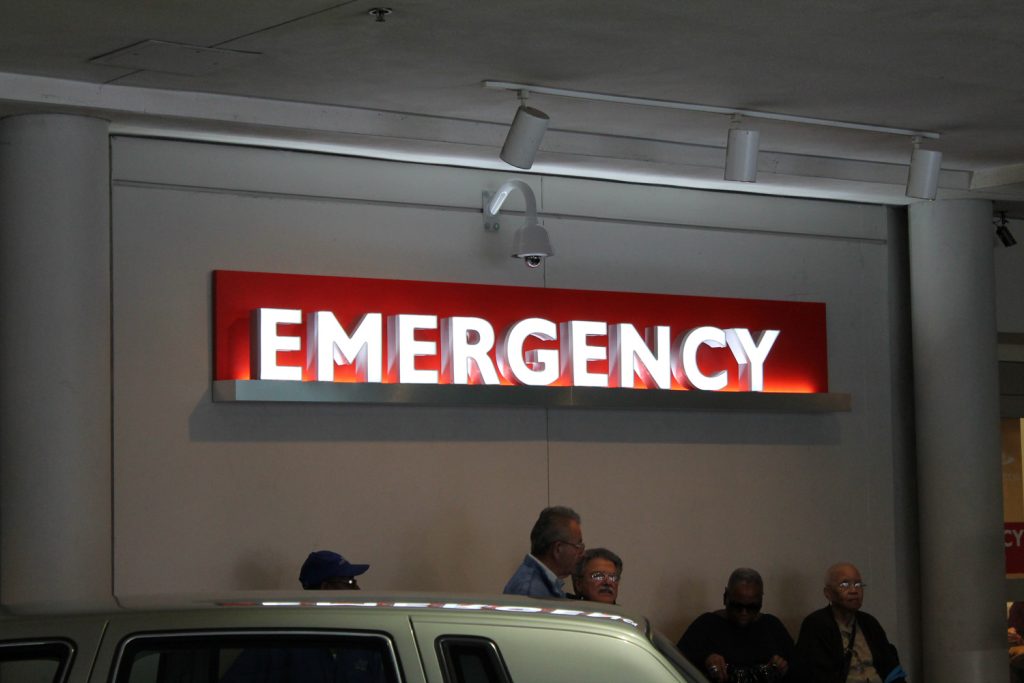In the crucial moments when seconds count, the clarity of wayfinding signage can be as critical as the care waiting within. Emory University Hospital understands this urgency, as evidenced by their recently installed emergency department sign. In this month’s “Healthcare Design Insights,” we spotlight how this sign stands as a guiding light for those in dire need.
The sign’s design is a beacon of clarity. Mounted within the hospital’s entrance canopy, the word “EMERGENCY” is spelled out in large, white capital letters, set against a backdrop that radiates a red glow. This choice is intentional and twofold; the red signifies urgency and commands attention, while the backlighting casts a halo effect, ensuring the sign is legible, day or night.
Above the sign, a security camera is vigilantly perched, a silent guardian that reassures visitors and staff of the hospital’s commitment to safety. This addition is subtle yet poignant, reflecting a comprehensive approach to emergency care that prioritizes both immediate medical attention and the overall security of the space.
The photograph captures a typical scene at the hospital’s emergency entrance—a tableau of waiting vehicles and gathered individuals, each person likely carrying their own concerns. Amidst this tableau, the sign is more than a directional tool; it is a symbol of hope and assistance.
Our article delves into the design process, including interviews with the hospital’s facilities management team and the sign’s designers. We discuss the psychological impact of emergency signage design and its effect on the behavior and comfort of patients and visitors.
Additionally, we explore the technical aspects of the sign’s construction — the materials chosen for durability, the considerations for all-weather visibility, and the integration with the hospital’s architectural language.
Emory University Hospital’s emergency sign is a testament to the power of design under pressure. It serves as an essential study in the critical role of environmental graphics in healthcare settings, where design efficiency can impact outcomes.

